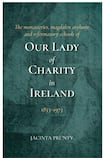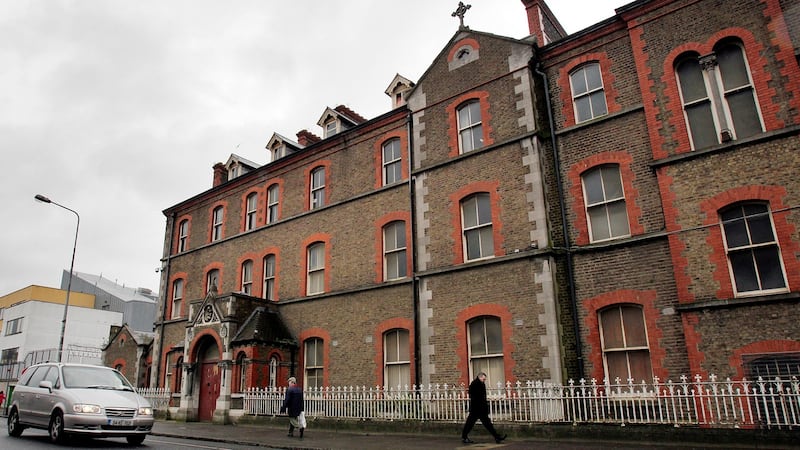
Laundry, the acclaimed 2011 theatre piece by ANU Productions, was set on the site of the old Seán MacDermott Street Magdalene laundry, run for more than 100 years by the congregation of Our Lady of Charity of Refuge. The institution closed in 1996. The performance exposed tiny audiences to various experiences recovered from former occupants, from a woman begging our help to bind up her leaking breasts after a lye bath, to a woman who regarded the convent as her sole refuge in life, to a woman who invited you to dance in a confession box, to a woman who entreated your help to escape. There were no nuns to be seen, but their presence was ambiguously palpable.
The story of Ireland’s Magdalene laundries has been gradually unfolding over the last 20 years, with personal testimonies from survivors, and committed advocacy groups, driving the process. The McAleese report, issued in 2013, found evidence of State involvement in the incarceration of 26.5 per cent of the 10,000 women admitted from 1922-96, the period the report examines, in 10 Magdalene laundries run by four congregations in Ireland. The report, although welcomed by the Government, was criticised by the UN among other agencies for its failure to properly investigate allegations of abuse, mistreatment and exploitation in the laundries.
Now we have an important contribution to the historiographical literature on the subject from Jacinta Prunty, a distinguished historical geographer, best known for her ground-breaking book, Dublin Slums 1800-1925 (1998) and her involvement in the RIA's Historic Towns Atlas project.
Prunty has produced a very long (616 page) book on the history of the Irish congregation of Our Lady of Charity of Refuge, the order which ran the two biggest Magdalene laundries in Ireland: High Park, Drumcondra, and Seán MacDermott Street (formerly Gloucester Street).
Institutional care
The book takes us through the establishment of the order in Caen, France, in the 17th century, with the expressed purpose of caring for women involved in or in danger of prostitution. The branding of such institutions with the image and story of Mary Magdalene is explored, as is the set of demanding rules established by the order’s founder, John Eudes. A small party of nuns came from France in 1853 to take over a refuge in Drumcondra, then run by a Father John Smith, who did not take kindly to his hegemony being disrupted by women.
Within a short time the nuns had established a new campus at High Park, Drumcondra, which was opened in 1857, along with a girl’s reformatory a year later, and became one of the largest Magdalene asylums in the country. The Gloucester Street refuge and laundry was opened in 1877, and two further institutions, St Anne’s girls’ reformatory at Kilmacud in 1948, and a training centre, later a children’s home, The Grange, at Kill of the Grange in 1958.
One of the central tenets of historical inquiry is that quoted sources can be inspected and interrogated by others
The book recounts the establishment and development of these institutions, with instructive chapters on each. It encompasses the development of the reformatory and industrial school systems, and the impact of the Cussen (1936) and Kennedy (1970) reports on institutional care for children. It charts the relationships between the enclosed congregation and the reigning archbishops, including a particularly fraught one with John Charles McQuaid. It explores the modernisation of the order’s systems in the wake of the second World War and later Vatican 11, as Ireland’s institutionalisation of women and children slowly began to change.
Requirement for remorse
The religious, cultural and class matrices in the relationship between nuns and laundry inmates can be best located in the term “penitent”, used until the early 1970s to describe the women who worked in the laundries. The term goes back to the foundation documents of the order, and symbolises a psychology of judgment and condemnation, and a requirement for remorse and atonement which characterises a culture of blaming the victim. Although the nuns frequently recognised that the vast majority of the women in their institutions were there because of poverty, they could not let go of a 17th century mindset, which prioritised sin and atonement over all other considerations.

This book is a genuinely valuable addition to the literature on religious orders, the Catholic church in Ireland, Magdelene laundries, industrial schools and reformatories. As well as thoroughly excavating the history of the order in Ireland, which is what the book sets out to do, Prunty quotes liberally from the scant information available from the registers of admission to the laundries, and the much fuller information available from the reformatory and industrial school records. Many interesting lines of inquiry are opened up by the book: Catholic family and social networks in 19th and 20th century Dublin; business and middle-class domestic support for the laundry system (unfortunately, we get very little on the laundries’ customers); class hierarchies within the congregation; power struggles between women’s religious congregations and diocesan clergy; comparative studies of Magdalene laundries elsewhere in Ireland and in other countries; the intimate background to Irish poverty.
The archives of this congregation are extensive, including all of its administrative correspondence, deeds to property, building, maintenance, employment and commercial transactions, the obviously very valuable annals and circular letters of the order, which seem to comprise a detailed history of its activities, extensive spiritual documentation, and very importantly, the admission registers of the Magdalene institutions and the reformatory and industrial schools.
Partisan narrator
Prunty, as well as being a distinguished historian, is a Holy Faith sister. She is a partisan narrator; her language is sometimes openly religious. Since her task is to tell the story of the order, she understandably emphasises the spiritual practices and development of the congregation. Her perspective on the various inmates of the laundries, reformatory and industrial schools managed by the nuns is almost overwhelmingly taken from the records of the order itself. This does not, of itself, devalue the extensive and detailed work she has done on these institutions, which affected so many lives, but there are potentially many other ways to interpret and supplement these very valuable records, which give us unique insights into poverty in Dublin since 1853.
There is however, one huge problem: the records are not available to researchers. When I recently telephoned the person in charge of the congregation’s archives, I was told that they are “private” and have “always been closed”. One of the central tenets of historical inquiry is that quoted sources can be inspected and interrogated by others, and assertions tested by access to the original material used to make them. In this case, historians, and many others with an interest in this material, are denied this opportunity.
This is a serious matter, as it would be in any situation where privileged access is granted to important archives, but all the more so since religious institutions played such a dominant part in the history of 19th and 20th Ireland, with the State’s full blessing. Many brave people, over the last 30 years, have provided harrowing testimonials to their time in Catholic-run institutions. It is time that the religious congregations and diocesan authorities made the transition to granting full access to their records, including those used for this book, subject to reasonable rights to privacy on the part of those mentioned. We will never know the full and complex story of what happened, both to the religious and to those who resided in their institutions, without such access.
- Catriona Crowe is head of special projects at the National Archives of Ireland











